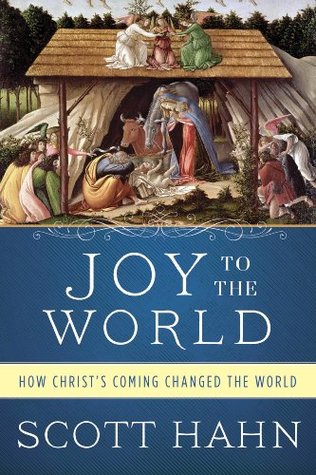More on this book
Community
Kindle Notes & Highlights
by
Scott Hahn
Read between
December 1, 2018 - January 6, 2019
Christmas is, for me, the joy and the love that passed between a young woman and the child who had been placed in her arms.
If we don’t understand Christmas, then we don’t really understand what Jesus did when he saved us.
family dimension
The Christmas story has an unconventional hero—not a warrior, not a worldly conqueror, not an individual at all, but rather a family.
The family is the key to Christmas. The family is the key to Christianity.
The details sometimes seem strange and impenetrable until we consider them in relation to a home, a mother, a father, a bond, a household, a lineage, a heritage.
Commentators since ancient times have concluded that both “heart” lines were simply the evangelist’s way of citing the Blessed Virgin as his firsthand source.
The memories pondered by Jesus’s mother were shared with the Church and “kept in the family” as a heritage.
The primary witnesses to Christmas are the accounts of Matthew and Luke.
Some say the infancy narratives are myths modeled on those of other world religions—or allegories, following the literature of the Greeks. Others say they are “haggadic midrash,” a form of illustrative tale, purposefully fanciful, crafted to make a doctrinal point. Still others claim the infancy narratives are simply fables with a useful moral purpose, like those of Aesop.
“What Matthew and Luke set out to do, each in his own way, was not to tell ‘stories’ but to write history, real history that had actually happened, admittedly interpreted and understood in the context of the word of God.”5
Even the number fourteen is a Davidic hallmark.
the number for fourteen spells out the name David.
He goes on to show that Jesus’s checkered ancestry, far from undermining his mission, actually confirms it.
The Genesis passage is unique in speaking of a particular child as a woman’s “seed”; the term normally applies to the son’s relationship with his father.
Today the centerpiece of Nazareth is the Basilica of the Annunciation, built over the “venerated grotto”—
She knew the Scriptures of Israel, the books we know as the Old Testament, and she could quote them and allude to them with ease. It is unlikely that she owned any books; she would have known the Bible mostly from its proclamation in the local synagogue, and from dinnertime discussions at home and with her friends. She had well-developed habits of prayer, and she did not stumble or hesitate as she conversed with an archangel.
We know that Mary had family connections to the Jerusalem priesthood.
We can, therefore, at least acknowledge the possibility that Mary spent part of her childhood in service at the Temple, as the apocryphal accounts claim she did, and that she was consecrated for this purpose.
Mary’s virginal motherhood is a sign.
It is not, however, a statement against the goodness of sex, as some heretics later claimed it was.
God’s fatherhood is perfect, so we know that fatherhood is not primarily physical, but rather spiritual.
For the sake of Christ he experienced persecution, exile and the poverty which this entails. He had to settle far from his native town. His only reward was to be with Christ.6 It is the only reward any Christian, father or mother, should hope for.
A gathering of angels is a clear and unmistakable sign of God’s presence and his favor.
And that’s how Christmas changed everything. By establishing the conditions for our adoption as children of God—by bringing about a certain identification between man and God in Jesus Christ.
This is a hallmark of biblical religion. God’s people interact with angels.
Where there is a marriage bond, there is God—within that family sacramentally—and there the angels gather and worship.
In such a family, every day can be an occasion for experiencing the joy of Christmas.
ENGLISH SPEAKERS USE THE word bedlam to describe a scene of uproar and confusion—but the word originated as a mispronunciation of Bethlehem.
We have already noted that by the middle of the first century many Christians were making pilgrimages to the site of Jesus’s birth.
Centuries later, the Talmud acknowledged the same attractive power and forbade Jews to seek knowledge from a Magus (the singular of Magi).
“Gold, as to a king; myrrh, as to one who was mortal; and incense, as to a God.”
Scripture doesn’t tell us how many Magi there were. An ancient tradition tells us there were three, but that may have been inferred from the number of gifts. Other ancient traditions even give us names: Caspar (or Gaspar), Balthasar, and Melchior.
Christmas, then, poses no threat to Easter’s importance. Quite the opposite is true. They are related expressions of the same divine love, ordered one to another by the same Divine Providence.


